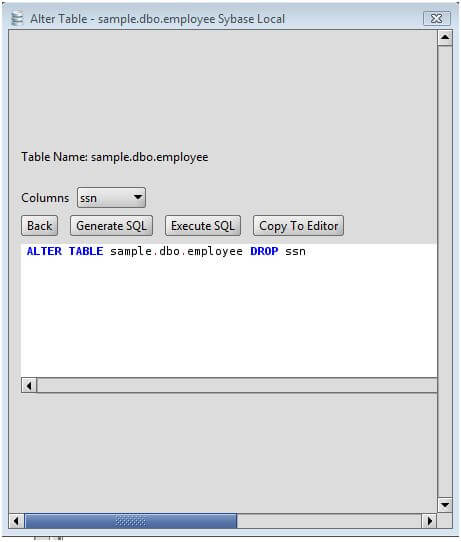


VACUUM FULL VERBOSE EMPLOYEES įor more information, see ALTER TABLE and VACUUM in the PostgreSQL documentation. Run the VACUUM FULL statement with the VERBOSE option to display an activity report of the vacuum process that includes the tables vacuumed and the time taken to perform the vacuum operation. Use the VACUUM FULL command to reclaim unused space from storage. WHERE TABLE_NAME = 'emps1' AND COLUMN_NAME=LOWER('COMMISSION_PCT') ALTER TABLE EMPLOYEES DROP COLUMN COMMISSION_PCT Alternatively, run an ALTER TABLE statement to force a rewrite. We can modify the table of columns per the user’s requirement. To force an immediate reclamation of storage space, use the VACUUM FULL command. We can alter the column in PostgreSQL by using an alter table statement using an alter table statement, we have to add a new column, renaming an existing column, and changing the column’s data type in PostgreSQL. The unused space is reclaimed by new DML actions, as they use the space that once was occupied by the dropped column. As such, dropping a column is a fast action, but doesn’t reduce the ondisk size of your table immediately because the space occupied by the dropped column isn’t reclaimed. However, when running the ALTER TABLE… DROP COLUMN command, the drop column statement doesn’t physically remove the column it only makes it invisible to SQL operations. PostgreSQL doesn’t support marking table columns as unused. ALTER TABLE EMPLOYEES DROP UNUSED COLUMNS įor more information, see CREATE TABLE in the Oracle documentation. SELECT * FROM USER_UNUSED_COL_TABS ĭrop the column permanently (physically drop the column). To set a column as unused, use the SET UNUSED clause.Įxamples ALTER TABLE EMPLOYEES SET UNUSED (COMMISSION_PCT) ĪLTER TABLE EMPLOYEES SET UNUSED (JOB_ID, COMMISSION_PCT) ĭisplay unused columns. To overcome this issue, a column can be marked as unused and then be physically dropped later. The main advantage of setting a column to UNUSED is to reduce possible high database load when dropping a column from a large table. Select statements don’t retrieve data from columns marked as unused and aren’t displayed when running a DESCRIBE table command. Unused columns aren’t physically dropped, but are treated as if they were dropped. Oracle provides a method to mark columns as unused. PostgreSQL doesn’t support unused columns.


 0 kommentar(er)
0 kommentar(er)
